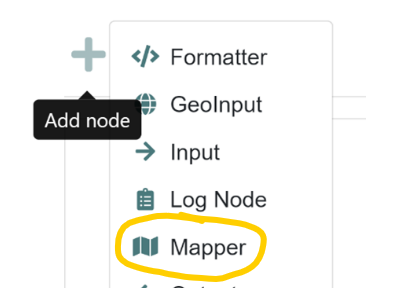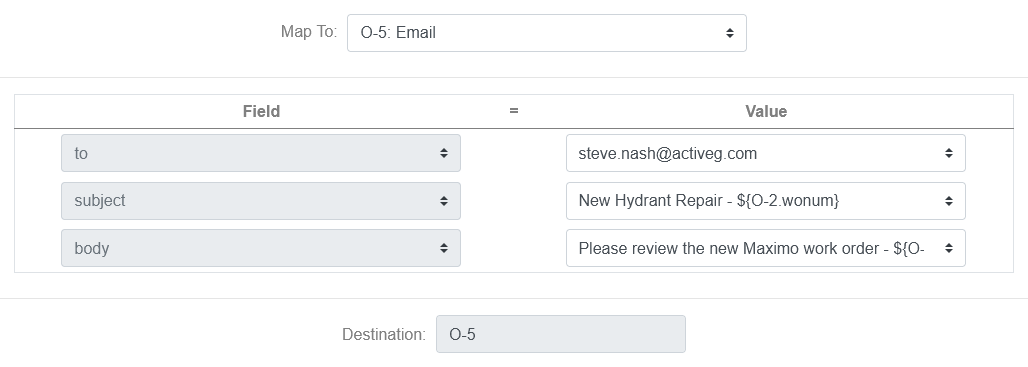Knowledge Base Help Center
Mapper Node
For most workflows, you’ll probably want to take data from a source and append it to a target data set. To do this, you need to be able to specify which source fields you want to match with the destination fields. That’s where the mapper node comes in.
The mapper node gives you the ability to map source fields with a destination field. It also allows you to specify hard-coded values for your target field, if you don’t want to use data from an upstream input.


A mapper always precedes and is linked to an Output node, and it controls the field mapping for output data. In the case below, you see various Maximo fields on the left that are in the output record, with the values to be inserted into those fields on the right.
The Value fields can either be 1) static values (like text or a number) or 2) dynamic values from other fields in the flow, or 3) a combination of both static and dynamic values, concatenated. A concatenated value might look like this: ${I-1.description} MP${I-2.BEGINMP} to MP${I-2.ENDMP} where the string “MP” is concatenated with the values from dynamic fields in the flow.
